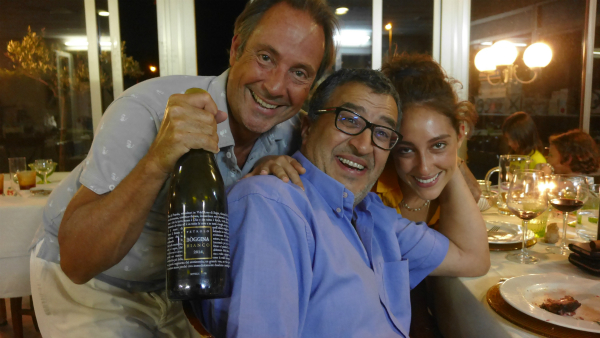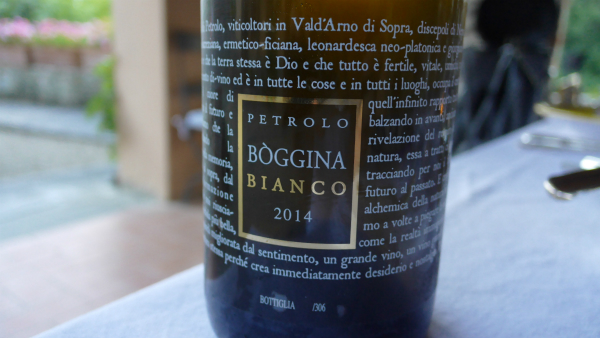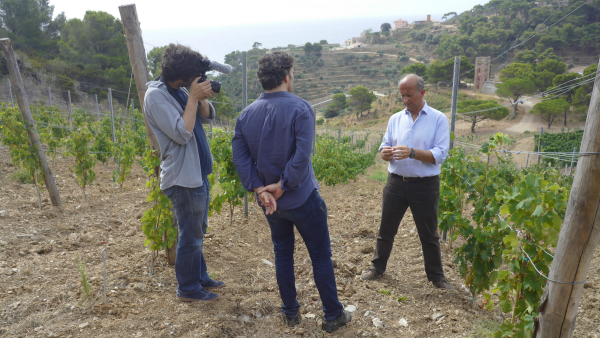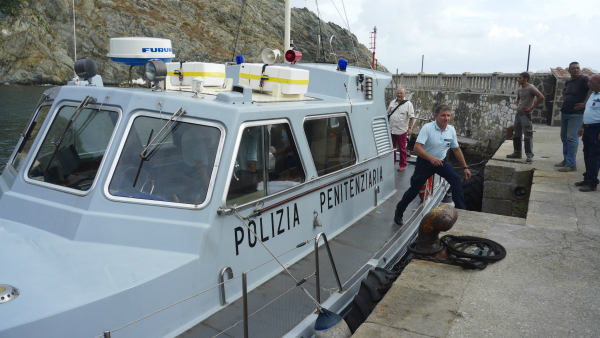
Whites from Orneillaia
Tuscan dry whites finally seem to be getting it together after decades of disappointment. For almost as long as I can remember, white wine in Tuscany has basically been an afterthought for vintners in the region, but today it’s clear that whites are on many of the best producers’ minds. After tasting more than 110 Tuscan whites—from crisp and lively vermentinos from the coast to structured trebbianos from the heart of Chianti Classico—, I found dozens of outstanding bottles. Three received a score of 95 points: Monteverro Chardonnay Toscana 2013, Ornellaia Bianco Toscana 2014, and Petrolo Toscana Boggina Bianco 2014.

Happy times with Luca and Lucia Sanjust and Mounir Saouma of Lucien Le Mouine and Boggina Bianco
“It only makes sense that Tuscany makes great whites with so many excellent reds out there,” said winemaker Axel Heinz, who in two vintages now makes arguably the best dry white of Tuscany with his barrel fermented and aged sauvignon blanc. “We have many different soils and micro-climates to work with.”

A bottle of Petrolo Toscana Boggina Bianco 2014
Indeed, I never thought that a trebbiano from one of the soils for sangiovese could be so superb, but Luca Sanjust made a terrific pure trebbiano in his single vineyard of Boggina near the city of Montevarchi. The wine was made with Burgundian wine wizard Mounir Saouma of the small negociant of Lucien Le Moine in Beaune. They only made two barrels. “The wine is as good as anything we make in Burgundy,” said Saouma, while on holiday in Tuscany with his family in July. “It has great structure and depth. It gets better in the bottle. You had to trust the oxidation at the beginning of making the wine and now it gets fresher and fresher.”

Filming Lamberto Frescobaldi in the small vineyards of Gorgona
Another unique white with a high rating is the white of the penal island of Gorgona. The vermentino and isonica blend is made from just about five acres of vineyards cultivated by prisoners. The Frescobaldi family are consulting on the vinticulture and winemaking and bottle and sell the wines. Not only is the wine fantastic but the island is beautiful and rustic. The rehabilitation through the project has been one of Italy’s greatest success stories in its penal code system with less than 20 percent returning to incarceration after leaving Gorgona, compared to 80 percent in other institutions in Italy. —JS

Getting off the Italian penal system boat at Gorgona Island

